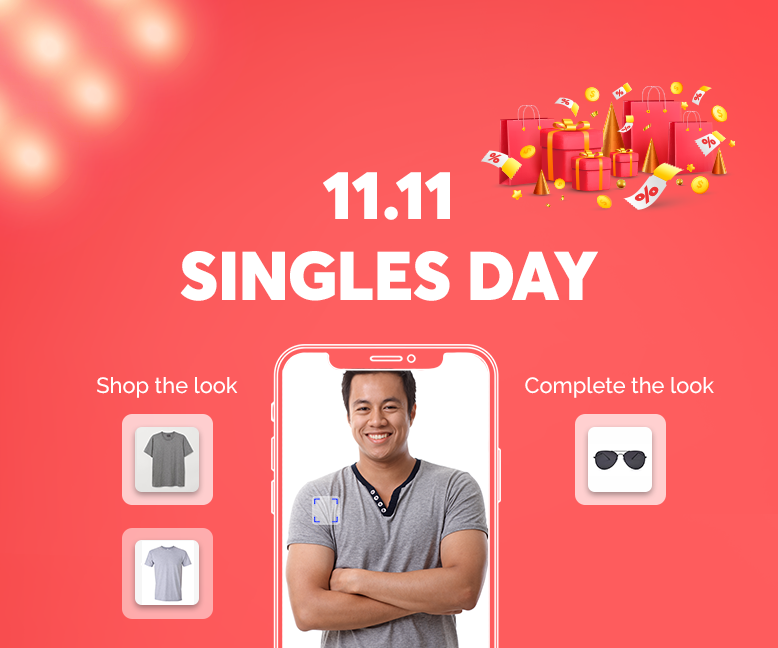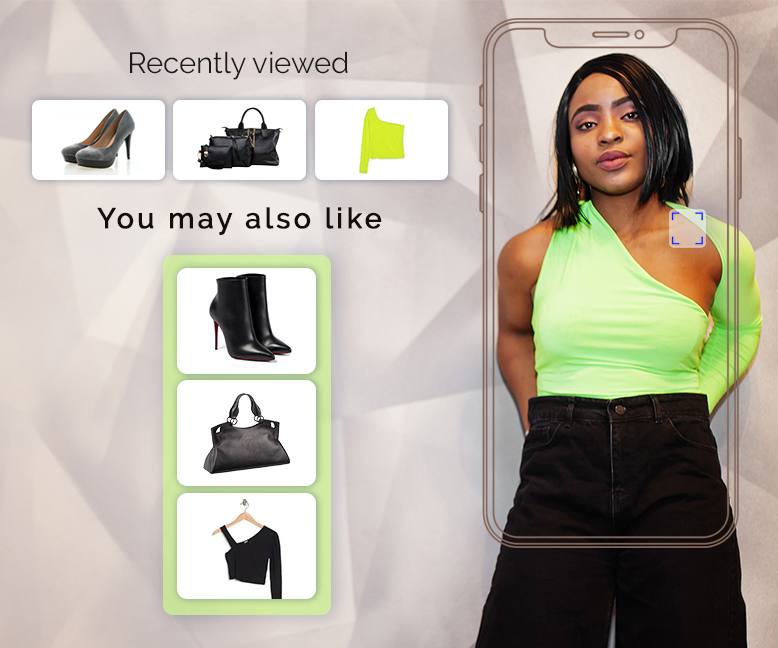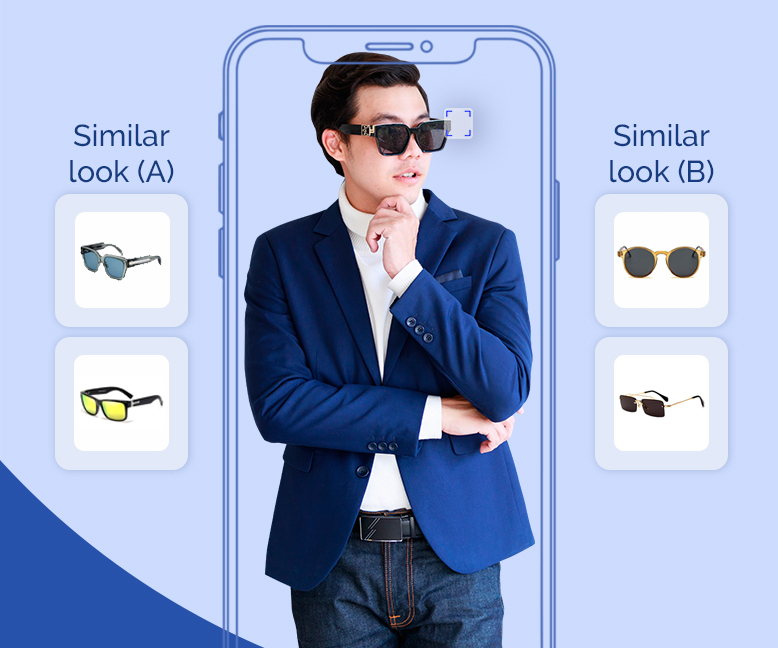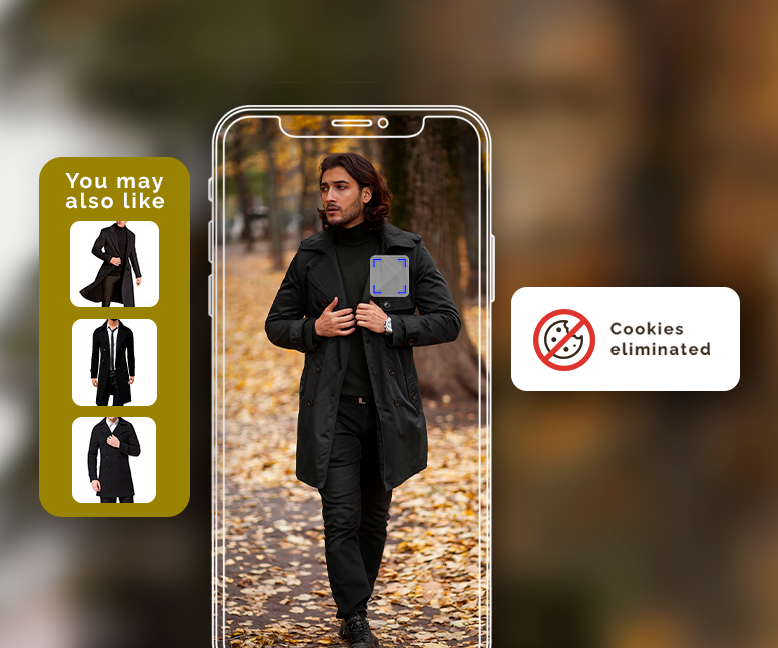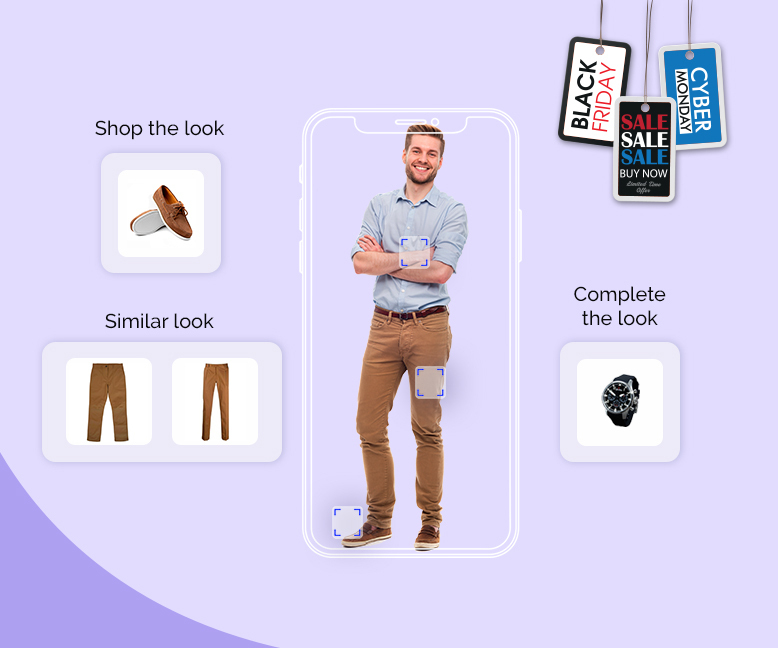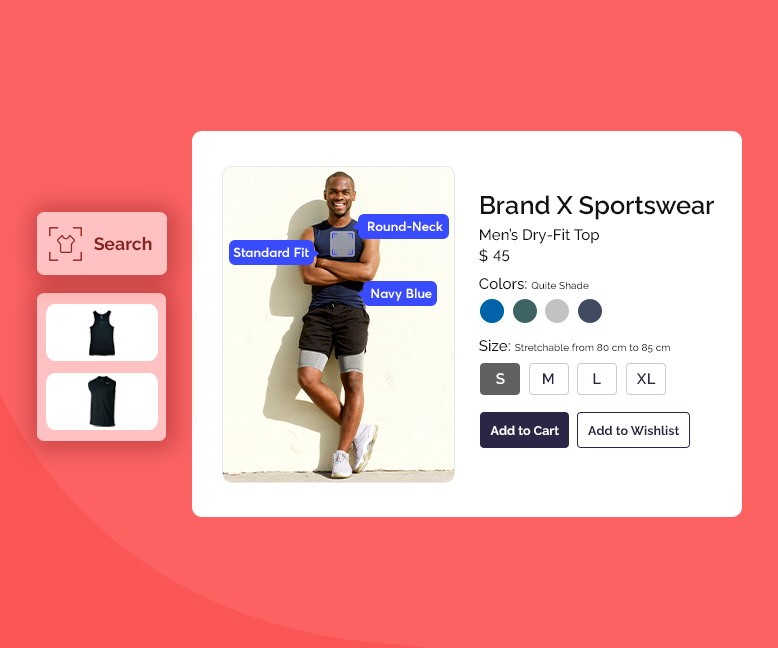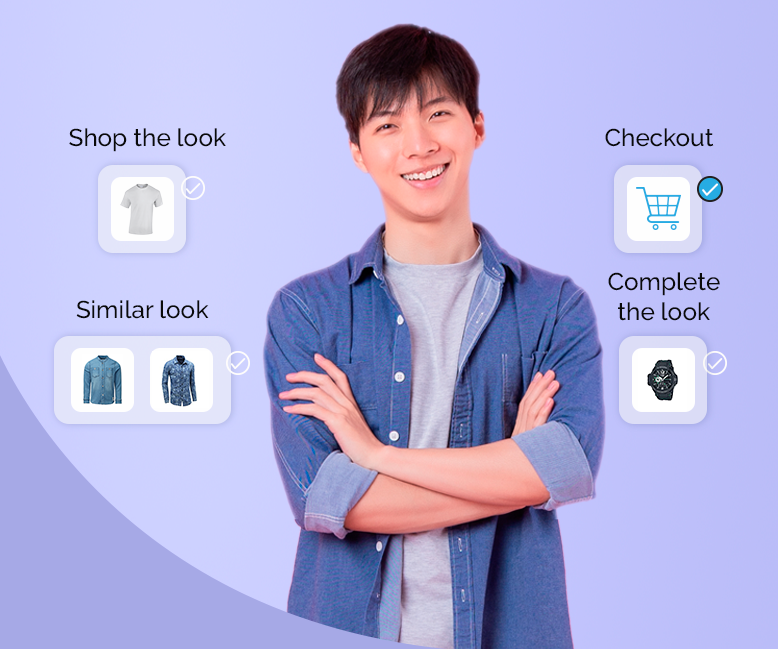- November 11 2021 | 8 mins read
AI-powered Recommendations that Drive Sales [3 Types]
Artificial intelligence (AI) is getting more style-savvy every day. It’s transforming digital merchandising by offering retailers and their customers strategic, style-driven product recommendations. But how do AI-powered product recommendations work? And how can ecommerce retailers take advantage of this sophisticated AI technology to drive sales?
In this post, we’re taking a look at the different types of product recommendations logic, and how ViSenze Discovery Suite supports these so that ecommerce retailers can use them to inspire shoppers and drive more purchases.
How an AI-powered product recommendation engine works
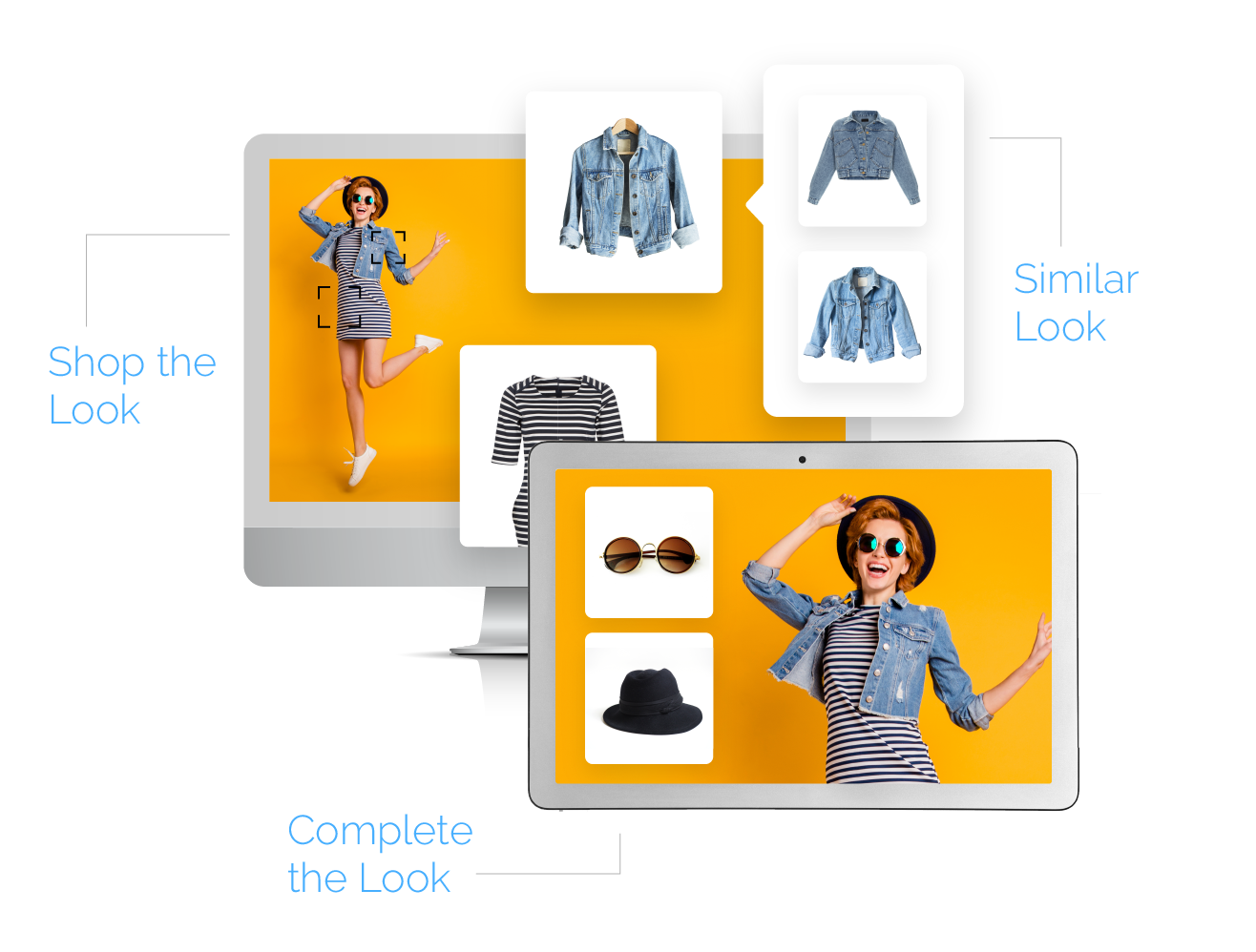
On an ecommerce site, a product recommendations engine automatically and intelligently generates product suggestions that have relevance to the hero product and/or the customers’ interests. It typically appears as a widget or carousel of products on a product description page (PDP), at the checkout, or anywhere across the site.
A product recommendations engine follows a process of collecting product data, analyzing it, and then using an AI algorithm powered by computer vision to serve up relevant results that align with the parameters set by the retailer. Through a combination of machine learning and manual testing, it’s possible to optimize an AI-powered product recommendation engine’s performance. This can help generate the most impactful results and highest conversions.
Product recommendation logic can be determined based on both customer behavior and the hero product itself — and both data sources have unique, strategic benefits.
Product recommendation logic based on customer behavior

The browsing history, clicks, and purchasing habits of individual shoppers and broader customer demographics can provide valuable insights for an AI-powered product recommendations engine. This information sheds light on what type of items they’re looking for, and what sorts of suggestions they would be most receptive to.
For instance, customers who constantly click on product recommendations in different apparel and accessory categories may be looking for style inspiration and new ways to expand their wardrobe. But customers who engage more with similar product suggestions are likely on the hunt for the perfect piece of clothing and may not respond as well to other types of products.
Understanding these behaviors and the motivations behind them can help retailers fine-tune their AI-powered product recommendations to create the most seamless and personalized experience.
Recommendation logic contextual to the hero product
Beyond customer data, a product recommendation engine driven by AI can tap into product catalog data to extract relevant connections and curate a variety of useful suggestions.
ViSenze’s AI solution uses computer vision to analyze the visual qualities of retail products — from fit, color, and pattern to style and occasion. It then generates and assigns new product tags and style attributes to each SKU. When it’s time to serve up related suggestions, the product recommendation system can review this data to find the most relevant matches.
Accommodating an array of possible user settings and customizations, the AI system can also factor in variables like price, brand, inventory, and more, based on retailers’ needs.
3 types of AI-powered product recommendations
To deliver relevant recommendations that delight and inspire shoppers and generate the highest conversions, it’s important to leverage both customer data as well as the style attributes of the products in your catalog. Smart Recommendations by ViSenze takes all of this data into consideration and gives retailers access to three different recommendation types:
1. Similar Look

A Similar Look feature, which some ecommerce brands will call “You May Also Like,” gives customers similar product recommendations that share style qualities to the hero product.
These visually similar recommendations are central to any recommendation strategy. If a shopper clicks on an item but it’s not a perfect match for them, Similar Look keeps the user actively engaged and gets them one step closer to finding the right product and making a purchase.
It takes their browsing activities into consideration, along with the style features of the hero product, to help shoppers advance through the customer journey without starting over or sifting through a vast product catalog.
2. Shop the Look
Styled model shots and lifestyle imagery can add to the appeal of individual products — but it can be frustrating for customers when they can’t track down the particular accessories and secondary products they see in those photos. Shop the Look empowers retailers to capitalize on that visual content and helps customers shop the exact items they see.
For instance, a customer might be looking at a PDP for a pair of jeans, but the top and shoes worn by the model catch their attention. In homewares, another customer might be browsing for dining room decor, but they fall in love with the table and chairs those accessories are photographed with. In these instances, Shop the Look makes the outfit or lifestyle image completely shoppable.
3. Complete the Look
Complete the Look offers complementary product recommendations based on style and occasion. This allows digital merchandisers to offer completely new outfits and fresh product combinations that inspire shoppers to keep filling their carts.
This type of recommendation widget can show suggestions across different product categories that share related tags and style attributes. For instance, on the PDP for a casual, beachy top, Complete the Look could suggest similarly casual beach accessories like sunglasses, tote bags, shorts, and swimwear.
Benefits of making product recommendations with AI
AI-powered product recommendations can dramatically improve product discovery. Whether you have a massive ecommerce catalog or a relatively small selection, the right recommendation widget can help shoppers find and purchase products they would have never found when searching on their own.
This also supports a more intuitive, streamlined, and satisfying user experience. You can use AI algorithms to generate hyper-relevant and personalized recommendations without any manual interventions necessary. The automated system can tackle hours upon hours of manual tasks in mere seconds, generating ROI faster than you can fulfill all the new orders you’re getting.
When Smart Recommendations is paired with ViSenze’s analytics module, Smart Data, you can more deeply understand the performance of your recommendation system and optimize its settings to drive more sales.
There are also risks of not using an AI-powered recommender system. If consumers can’t find the product they’re looking for, you risk creating a negative customer experience. You’re either relying too heavily on manual merchandising efforts or entirely missing out on valuable — and virtually effortless — cross-selling opportunities. If your business isn’t offering AI-powered recommendations, you can bet your top competitors are — and taking away your loyal customers in the process.
Get smarter about product recommendations with ViSenze’s AI-driven solutions
Ready to start leveraging artificial intelligence for your ecommerce business?
ViSenze Discovery Suite acts as a flexible, scalable ecommerce personalization engine. Contact us to learn more about how ViSenze helps retailers globally deliver exceptional shopping experiences and receive a complimentary Discovery Optimization Report of your website with actionable insights or connect with us and request a demo.
About the Author

Luciana Amaral is a product consultant at ViSenze and has 14 years of experience in fashion retail. As a fashion executive and category manager, she has led large teams to implement brand categories’ value propositions and exceed commercial results. She is passionate about fashion, sustainability, and technology.

 Blog Home
Blog Home 



